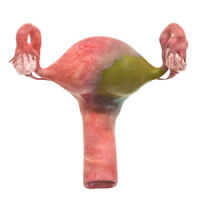Researchers in the U.S. have found that uterine fibroid embolisation (UFE), a minimally invasive treatment for uterine fibroids is vastly underutilised – especially in rural and smaller hospitals. Despite data showing that UFEs result in substantially lower costs and shorter hospital stays than hysterectomies, there were more than 65 times as many hysterectomies performed than UFEs, according to a study presented at the Society of Interventional Radiology's 2017 Annual Scientific Meeting.
See Also: Molecular Imaging as Tool in Precision Cancer Care
The findings suggest that many women are not aware of the benefits of UFE. "Patients need to know about the major differences between surgical treatments and UFE, especially that this is a non-surgical treatment that preserves the uterus and has a much faster recovery time compared to hysterectomy," says lead author Prasoon Mohan, MD, MRCS, assistant professor in the department of interventional radiology at the University of Miami Leonard M. Miller School of Medicine.
According to the National Institutes of Health, a majority of women – almost three out of four – will develop uterine fibroids by the age of 50. Fibroids develop from the uterine muscular wall and vary in size from a quarter of an inch to larger than a cantaloupe. In most cases, women are not aware that they have fibroids because they do not have symptoms. Symptoms when they occur include heavy menstrual bleeding, pelvic pressure or pain, abdominal enlargement, pain with intercourse, constipation and frequent urination.
For this study, Dr. Mohan and colleagues reviewed data from the 2012 and 2013 Nationwide Inpatient Sample (NIS), the largest all-payer inpatient health care database in the country. Using billing codes that identified hysterectomies and UFEs completed for the treatment of uterine fibroids, researchers compared how women were treated for this condition, the costs of the treatments, and the outcomes. The team reported these key findings:
- During that period, 165,000 more hysterectomies were performed than UFEs (167,650 vs. 2,470) nationwide
- Only 0.4 percent of UFEs were performed in rural hospitals compared to 9.4 percent of hysterectomies in the same setting
- 7.9 percent of UFEs were performed in small hospital systems compared to 67.4 percent in large hospitals systems
- UFE resulted in shorter hospital stays (2.16 for UFE vs. 2.32 days for hysterectomy), and cost lower ($21,583 for UFE vs. $33,104 for hysterectomy)
UFE is performed by an interventional radiologist who inserts a thin catheter into the artery at the groin or wrist. The doctor guides the catheter to the fibroid's blood supply where small particles, about the size of grains of sand, are released to float downstream and block the small blood vessels and deprive the fibroid of nutrients. This results in the fibroid softening, bleeding less, and shrinking in size.
Dr. Mohan urges healthcare professionals to find ways to increase patients' access to this effective, less invasive therapy.
Source: Society of Interventional Radiology
Image Credit: Hic et nunc
References:
S. Narayanan; A. Gonzalez; A.
Echenique; P. Mohan. (2017) Nationwide analysis of hospital characteristics, demographics and cost
of uterine fibroid embolization; University of Miami Miller School of Medicine, SIR Annual Scientific Meeting, March 4-9, 2017.
Latest Articles
Minimally invasive, Interventional Radiology, Uterine Fibroids, uterine fibroid embolisation, UFE
Researchers in the U.S. have found that uterine fibroid embolisation (UFE), a minimally invasive treatment for uterine fibroids is vastly underutilised – especially in rural and smaller hospitals.



























